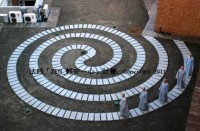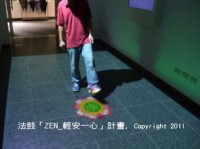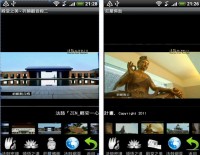1.
Audio-visual stimulation and mindfulness meditation training: The effects of digital meditation on attention, electro-cortical activity, and well-being.
by Brignolo, Luis Mariano, Ph.D., Institute of Transpersonal Psychology, 2007 , 89 pages; AAT 3271449
AltarNation: interface design for meditative communities Full text Pdf (261 KB)
Abstract (Summary)
This was an exploratory study of the use of audio-visual stimulation(AVS) in the facilitation of meditative states of consciousness as an adjunct to mindfulness training. AVS is a brainwave entrainment-based technology that is utilized for entertainment, personal growth, stress management, and, educational, and medical purposes. Brainwave entrainment is a neurophysiologic effect to elicit an increase or decrease in the electrical firing rate of selected neurons (i.e., electro-cortical activity). Forty-one participants (21 in the experimental group and 20 in the control group) took part in a 6-week mindfulness training, which included a 2-part meditation instruction and daily mindfulness meditation practice. The experimental group was also given AVS, in the form of the AV3x Digital Versatile Disk (DVD), as an adjunct to their training. Well-being was measured using the Perceived Stress Scale, the Generalized Self-Efficacy Scale, the Subjective Happiness Scale, and the Life Orientation Questionnaire. Mindfulness was measured using the Kentucky Inventory of Mindfulness Skills and the Mindful Attention and Awareness Scale. The Dimensions of Attention Questionnaire also was administered at the end of the 6-week training. The results suggest that AVS can be effectively used as an adjunct to mindfulness training. The experimental and the control groups reported improvements in subjective well-being and the frequency of occurring mindful states of consciousness (SoC). The experimental group also reported improvements in the integration of mindfulness skills. The mindfulness training resulted in similar meditative SoCs for the experimental and the control groups, with the distinction of greater reported vigilance of internal and external environment for the participants meditating with AVS. These results, their interpretation and implications of this study are discussed in the final section of the dissertation.
2.
The MYTHSEEKER project- Concepts and realization.
Rogers, McCagie Brooks. (1994). The Journal of Systems and Software, 25(3), 271. Retrieved September 28, 2009, from ABI/INFORM Global. (Document ID: 52499).
Abstract (Summary)
The MYTHSEEKER project and MYTHSEEKER computer system are concerned with computer-aided interactive exploration of traditional systems of personal myth and meditation. Four major MYTHSEEKER software modules have been designed that use interactive multimedia, expert systems, and virtual reality technologies. The history of the MYTHSEEKER project outlines the technological, humanistic, and mythic/meditational interconnections of the disciplines involved. First-order requirements for the MYTHSEEKER system are offered under the categories function, methodology, data base, technology, and ethics. Second-order function and methodology requirements are outlined with examples for their realization along with 2nd-order data base requirements. Implementation of MYTHSEEKER is defined on a high level in terms of successions of interfaces, data structures, and generic module structures. A summary of the MYTHSEEKER qualitative model needed for an integrated framework and an ethics statement for MYTHSEEKER applications is included.









